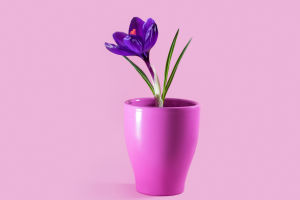Hydrangeas, also known as pachyphyllum or western hydrangea, are truly beautiful plants with many aliases. This common deciduous shrub has a long history of being planted, and in this article, we will discuss the best methods and precautions for hydrangea planting.
Hydrangeas symbolize hope, health, love endurance, beauty, and reunion. As a shade-tolerant plant, hydrangeas have high water requirements and should be thoroughly watered once a day.
During the hot summer months, water should be applied twice a day and should be avoided on the flowers. If you don't have time to water frequently, adding a thick layer of water moss to the soil surface of the hydrangea can help keep it moist and promote the flourishing of the hydrangea branches and leaves.
The ideal temperature for growing hydrangeas is around 23 degrees Celsius, and the temperature should not drop below 5 degrees Celsius in winter. High temperatures can cause hydrangea flowers to fade quickly.
Hydrangeas bloom from May to July each year, and to ensure a good blooming season, proper fertilization is crucial. Fertilizer should be applied every two weeks to ensure adequate nutrients for the plant.
The best soil for growing hydrangeas is loose, fertile, and well-drained sandy soil. However, the color of hydrangea flowers can be affected by the acidity of the soil. Blue flowers appear in slightly acidic soil, while red flowers appear in alkaline soil.
Neutral soil can produce confusing colors. If you want to adjust the color of your hydrangeas, it's best to mix soil early, at least during winter when the flower buds are differentiated.
During spring, when there is more rain, you can take cuttings from the mother tree of the hydrangea. Select robust and pest-free shoots as spikes, generally 15 cm in length with a node at the base.
After applying the rooting hormone, place the cuttings in prepared culture soil, and keep them in the shade with soil kept moist. Cuttings typically take about a month to root and are suitable for planting in October, March, or April.
Hydrangeas can be planted outdoors in the south where it is more humid and warm, but in the north, it is best to plant them in pots and move them indoors during winter. During the growth period, plucking is recommended to promote the growth of lateral branches, and pruning it short before winter will make it more conducive to overwintering.
Pest and disease control is crucial to maintaining healthy hydrangeas. Poor ventilation can lead to aphids and red spiders, with the latter being a common pest during high-temperature periods, especially in poor ventilation and high-density planting environments. The leaves affected by red spider mites initially show small white spots that fade to yellowish-white.
In severe cases, the leaves wither, causing the plant to die. Reasonable fertilizer application and timely removal of bottom yellow leaves, old leaves, and diseased leaves are important to provide an adequate supply of nutrients and enhance ventilation and a light environment, improving the plant's resistance to disease.
Additionally, the Japanese purple sunflower (Ajisai) is a famous type of hydrangea that blooms in Kyoto and Kamakura after the plum rainy season in June and July. The slope of undulating hydrangeas of various colors is a sight to behold. Shrines, ancient temples, and quiet paths are full of hydrangeas, making it an ideal place for a stroll. If you have the opportunity, be sure to see it for yourself.


